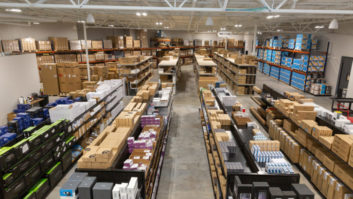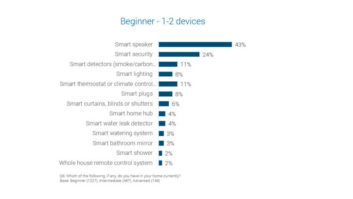There’s an ancient Chinese curse that goes “May you live in interesting times.” 2008 is certainly going to present the consumer electronics industry with “interesting times.”
For consumer electronics retailers, there will be a premium on becoming better informed about a wide range of diverse topics. Consumers are going to have more questions than ever, and a smart retailer will gain consumer trust (and market share) by ramping up your employees’ ability to handle a complicated range of topics.
Here’s the short list:
- next-generation optical disc “format wars”;
- shutoff of U.S. analog TV broadcasts coming in 2009;
- consumers’ needs for more international information; and
- online entertainment vying with pay-TV services.
The most visible conflict is the one running between HD DVD and Blu-ray Disc to see who can win over the most consumers for their next-generation optical disc player. The amount of press the “format wars” are getting has heightened awareness for all consumer electronics products, especially widescreen HDTV displays. As many consumers decide to hold off on next-generation disc players, an interim market has developed for up-converter products that use high-performance computer graphics chips to enhance the images coming from traditional DVD players and make them look beautiful on giant plasma HDTV sets. It may be the end of 2008 before we even begin to see a clear winner in the “format wars.”
The next big issue for the entire CE industry is the analog TV cutoff. While it’s set to occur on Feb. 17, 2009, this year is going to be when all of the preparations get made. 2008 will also be the year in which the complicated government-funded set-top box rebate program will start up, with plans to underwrite consumer’s purchases of more than 20 million digital converter boxes.
Local TV stations and cable TV systems have already began playing public service announcements (PSAs) about the transition.
In-Stat fielded a survey of 1,266 U.S. consumers, age 18 and older, who had broadband Internet to their home and a TV set in the house. We asked this tech-savvy group about their level of awareness of the upcoming shutoff of all U.S. analog TV broadcasts that’s due to occur on Feb. 17, 2009. Nearly 40 percent said, “This is the first I’ve heard of it.”
Figure 1 illustrates the range of results. Only 11 percent reported that they were very aware of the transition, and actually making plans to upgrade all of their CE equipment. Young women are a key group that needs to be made aware.
For more information about the analog cutoff date, visit www.dtv.gov or www.dtvtransition.org.
In-Stat also asked survey respondents if they thought they were getting enough international news, sports, weather and other programming from their U.S.-based TV service providers. Of those who had an opinion, it was a 50-50 split, which completely surprised us. Imagine having 200 TV channels available, and still not getting what you want?
It’s even more interesting when you consider that there are more than 60 Spanish language programming services, and cable operators and satellite services continue to expand their ethnic channels. Programming is widely available in Korean, Russian, Cantonese, Mandarin, Polish, Italian, French, German and Vietnamese. It appears that people who don’t speak English are getting a lot more international content than the people who took our survey.
Males of all ages were the key demographic consistently asking for more international information. Males across all age groups and income levels are going to the Internet for their international news and sports info. When we consider that advertisers are always complaining about how hard it is to reach males, sponsoring more international programming seems like an easy solution.
The survey also asked a battery of questions about how people use the Internet and their mobile devices for entertainment. An interesting result was that consumer’s definition of the word “entertainment” is changing. It no longer means getting TV shows from a network or movies from a studio. Today’s tech-savvy consumers are entertaining each other with user-generated content that they make with their own cameras and audio equipment. The social networking phenomenon, coupled with instant messaging and “buddy lists” are creating small, but connected, audiences that are spending less and less time with TV and movies, and more time sharing with each other.
About 30 percent of respondents told us that, within the next three years, they will be spending more of their time doing things on their broadband Internet connections than they will be watching their brand-new high-definition TV sets! As Bob Dylan once sang, “The times, they are a-changin’.”
Finally, our survey set up a scenario that asked respondents to tell us how likely they would be to cancel their pay-TV subscriptions if they could get all the TV they wanted from free from the Internet. We expected about 5 percent to say yes. We were shocked when 15 percent said they “definitely would cancel,” and nearly 30 percent said that they “probably would cancel” their pay-TV service.
These results show that a growing number of consumers are becoming aware of the programming options that are available on the Internet, and they will be carefully scrutinizing their monthly pay-TV bills. Who knows? The future of the Internet may be delivering international information to tech-savvy consumers.
2008 will certainly be a year of “interesting times” for the consumer electronics industry. Enjoy it!
Gerry Kaufhold forecasts emerging markets for In-Stat, a market research firm based in Scottsdale, Ariz. Contact him at (520) 363-9752 or [email protected].













